Assemble
Compensation Cycle in a Nutshell
Compensation cycles assess employee pay against company goals and market benchmarks, including salaries, benefits, and incentives. While these reviews promote fair pay, the traditional method relies on complex spreadsheets that can be prone to errors and overwhelm HR teams.

What is Assemble.inc
Assemble.inc delivers a compensation platform that helps organizations plan and execute systematic compensation decisions to attract, motivate, and retain employees while eliminating inequality pay. Assemble integrates with an HRIS, ATS, and Cap Table to ensure accurate data. Company’s broader vision is to bring an end-to-end total compensation and benefits management platform to its customers.
Where we started with compensation cycles
Assemble released their compensation cycles MVP in 2022, providing an efficient solution for managing the compensation planning process, from planning and communication to execution and analysis. Our goal as a comp cycle solution is to make planning and executing compensation decisions simpler and faster.
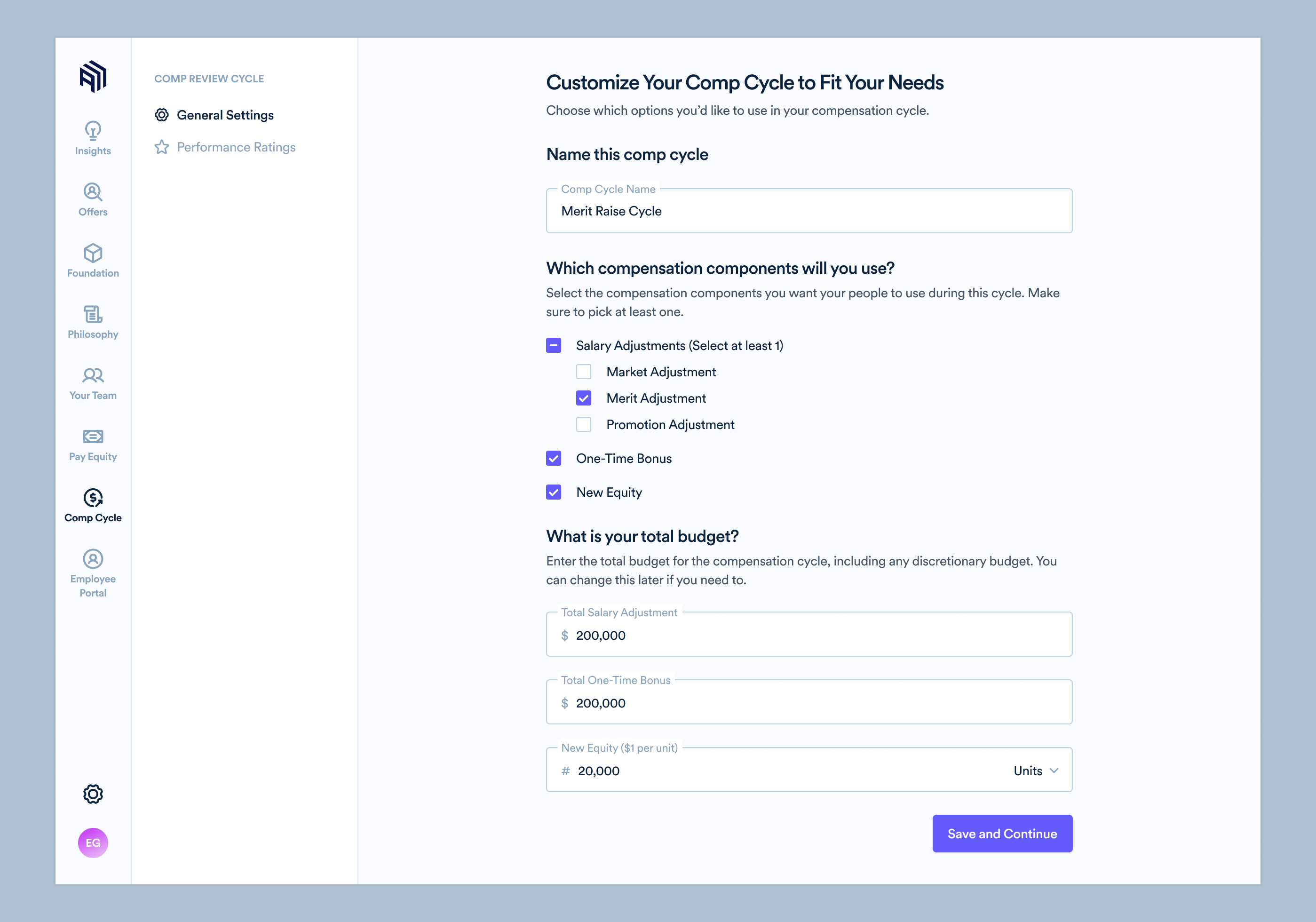

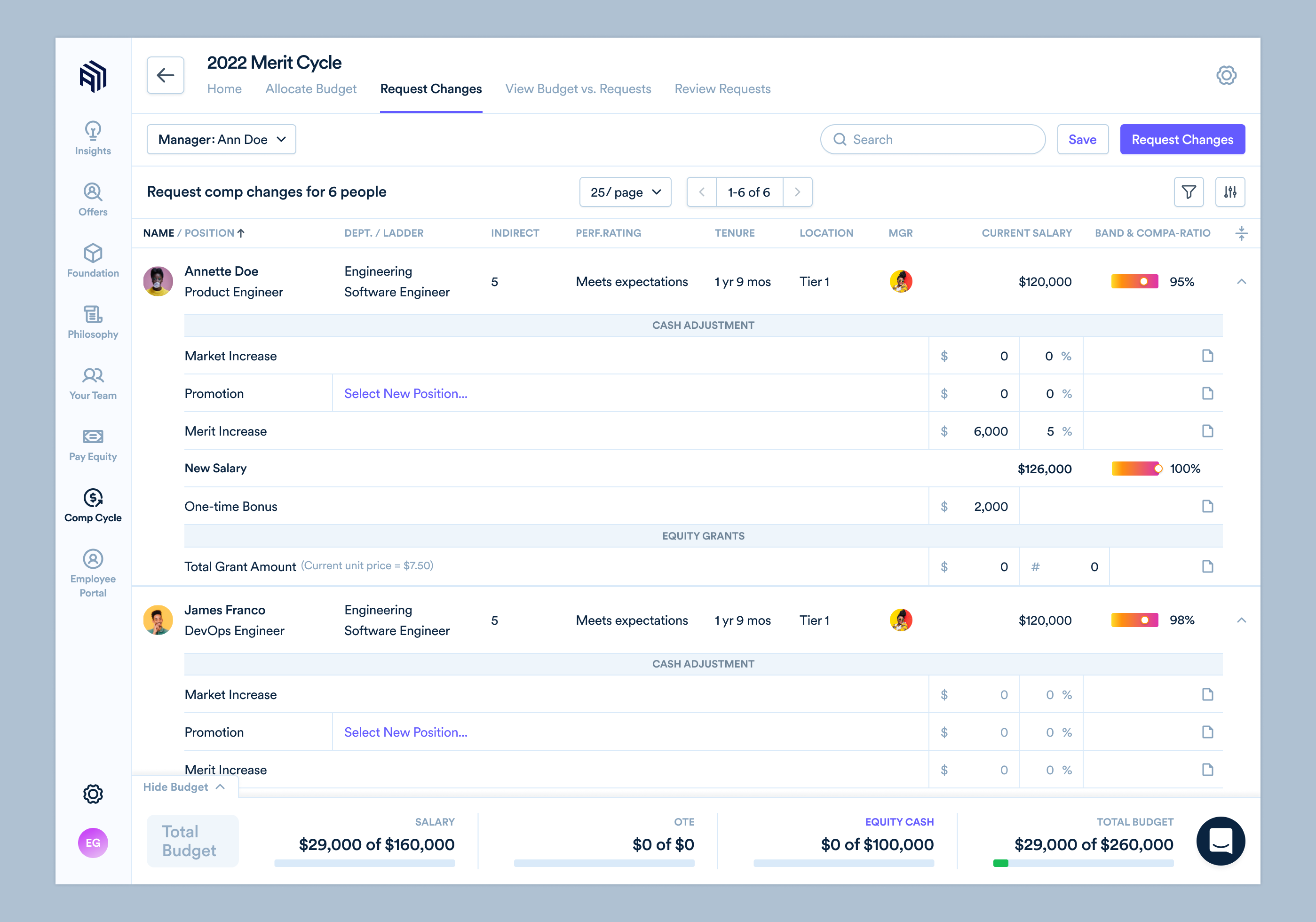
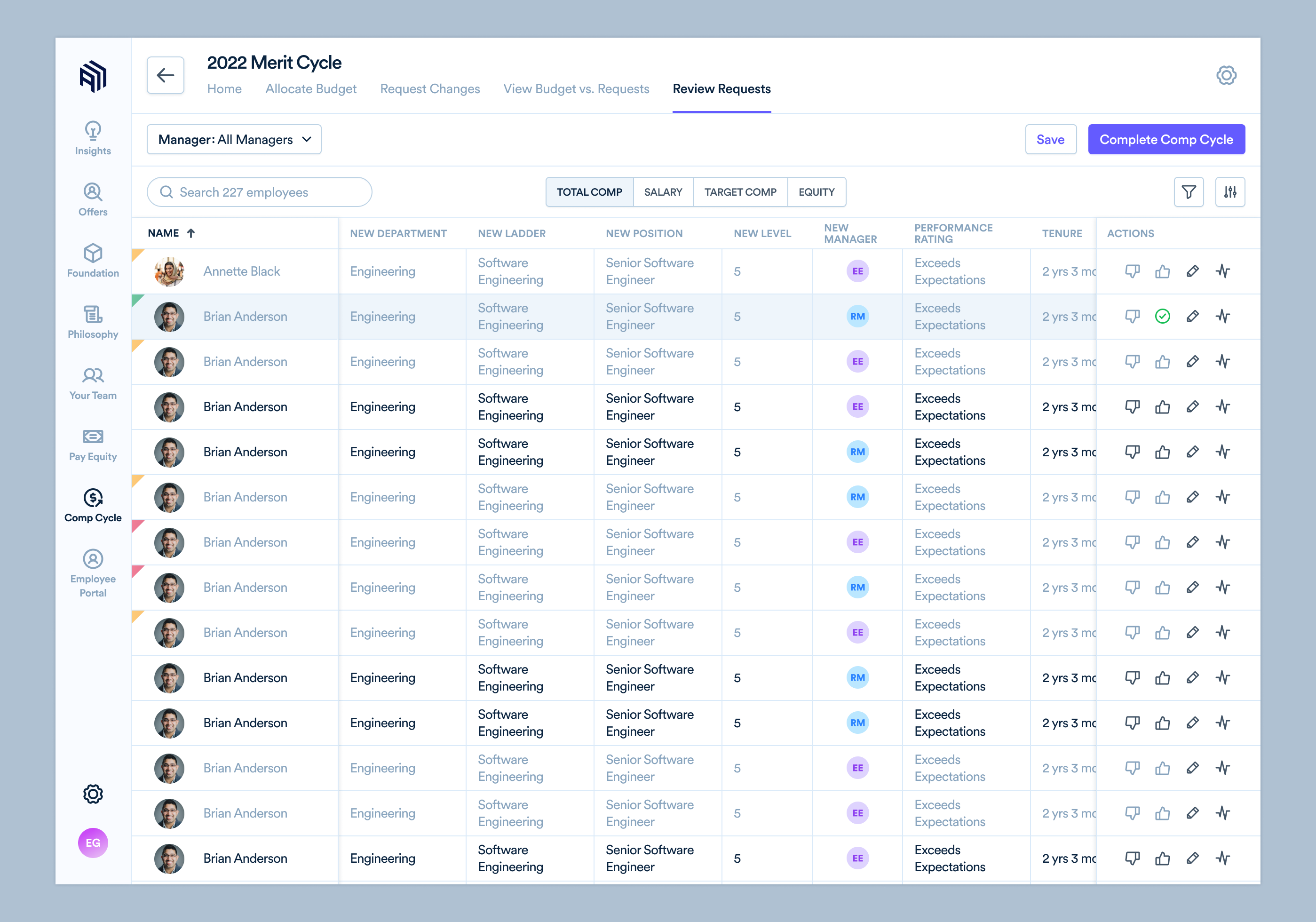
Assemble's compensation planning solution had an intuitive interface and key features like major compensation types, multiple locations and currencies, robust budgeting and sequential approvals, basic admin setup, and access policies with user permissions. However, the product experienced low adoption rates.
Problem space
Current customers and prospects are blocked on adopting comp cycles.
Opportunities
There is an opportunity to investigate customer adoption issues and identify potential product enhancements to better serve our target audience. How can we enhance the Assemble comp cycle to provide a more efficient way of planning and executing compensation decisions?
My role
As a Senior Designer in a company without a dedicated PM, I collaborated with the development team to define project scope and objectives. My responsibilities included managing the end-to-end design process, conducting user research and validation, documenting solutions, creating high-quality UI designs, contributing to the design system, developing project plans to track progress, and working with cross-functional teams to align designs with company goals.
Solutions discovery
Based on research, user testing, self-reported requests and feedback coming from sales and CMS teams, I identified potential features to explore. Our team employed the RICE scoring model to prioritize. With only six engineers in the company, and 1-2 engineers per feature pod, it is crucial to maintain a scrappy and considerate approach. And RICE model helped us to objectively assess the potential impact, reach, confidence, and effort required for each feature. Following were the priorities for the next 2 dev sprints:
- [Admin / Automation] Adding Eligibility will reduce confusion and time wasted on employees who do not qualify.
- [Admin / Orchestration] Adding Performance Scale Builder per Cycle will allow to orchestrate and test comp cycle in advance, and don’t fully depend on performance cycle readiness.
- [ Manager / Automation, Transparency, Better Collaboration on Comp Decisions] Adding Compensation Guidance will streamline and automate compensation adjustments, minimize room for errors, and increase overall efficiency and transparency .
- [Scale, Enterprise Readiness] Adding additional Compensation Types like variable compensation in the comp cycle to better serve our target audience.
Eligibility project
To delve deeper into the project delivery process at Assemble, let us take a closer look at the Eligibility project as an example, which provides clear scope and direction. In addition to leading the end-to-end design process, I also took on project management responsibilities for Comp Cycle enhancement effort.
What do our customers hope to accomplish
I aimed to establish a foundation of issues and requirements related to compensation cycle eligibility, and thus, I analyzed a large volume of customer support and sales data obtained from Gong and Productboard.
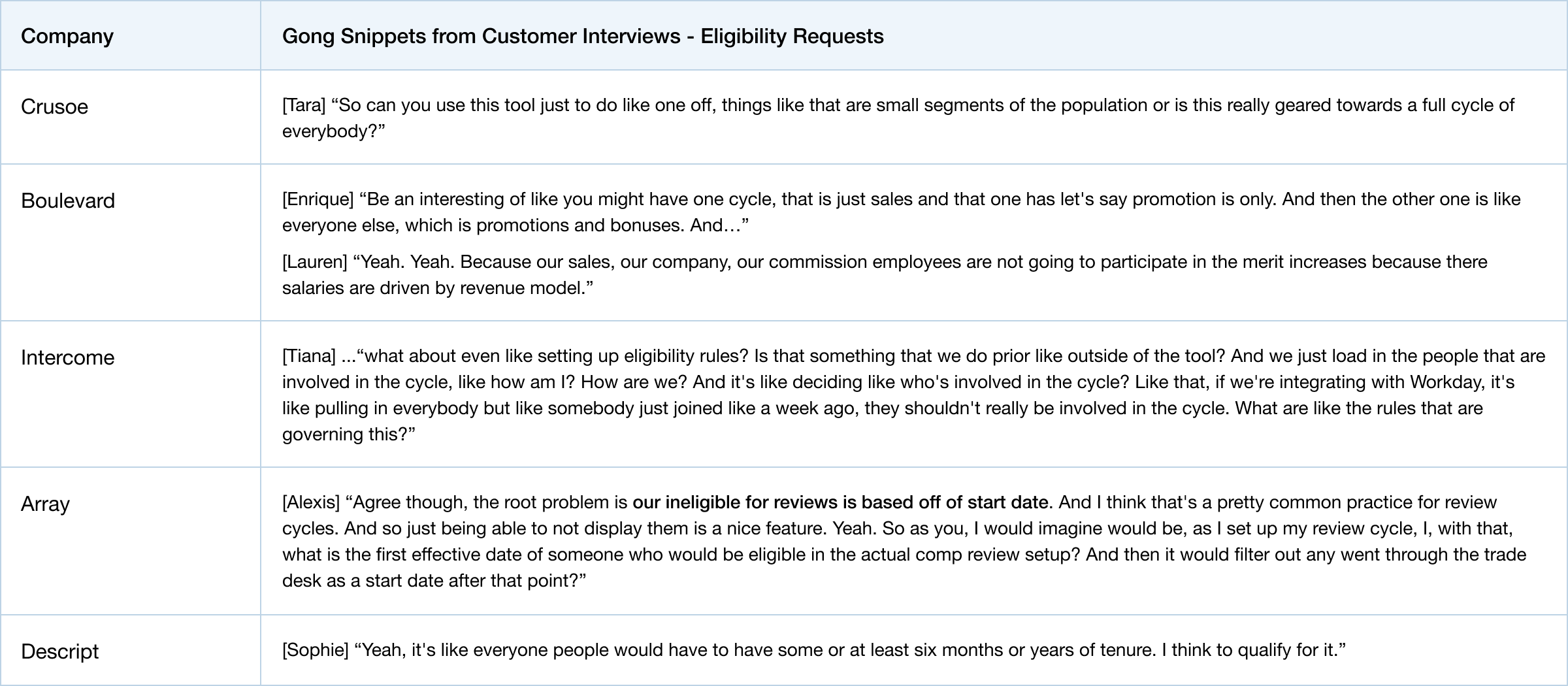
Subsequently, I collected insights from the sales department about customers who paid for the Comp Cycles feature and evaluated actual usage data utilizing Mixpanel. Furthermore, I collated a roster of prospective customers in the sales pipeline who give importance to Comp Cycles when making decisions.
I initiated contact with them by conducting a survey to obtain general information about their usage of Comp Cycles and to ascertain if they were open to collaborating with me on the design of the Eligibility feature. After this, I interviewed customers to gain a better understanding of their survey responses and their methods for qualifying employees for comp cycles.
Jobs to be done
[JTBD] As a compensation admin, I want to configure which employees are eligible during a comp cycle so that no effort is wasted in Assemble on employees who do not qualify for changes: It’s very common for companies to run compensation cycles for only a subset of employees. When employees who are not actually eligible show up in Assemble, it’s confusing to have to use workarounds or explain to managers that certain employees should not be given recommendations. The admins also have to double check all the details throughout the cycle to make sure the ineligible people are not messing up budgets.
Common rules include:
- Tenure or start date (e.g., people only qualify after 6 months from starting).
- Performance (e.g., for this performance-based cycle, only include high performers).
- Role (e.g., run a cycle only for people with commissions, like the Sales department).
- Equity vesting status (e.g., only run a cycle for people whose equity is more than 50% vested).
- Promotion (e.g., only run a cycle people who are eligible for promotion).
- Employment status (e.g., full time vs contractor vs hourly).
- Last raise date (e.g., more than 18 months ago).
- Band placement (e.g., only people who are below band).
- Manager (e.g., choose any manager and automatically include all their direct + indirect reports)
[JTBD] As a manager, I want to only see employees in Assemble that are actually eligible for the comp cycle: On the flip side, it’s confusing and potentially frustrating for managers to have to figure out which employees to ignore during the cycle.
What outcomes are we trying to drive
Expectations
Current customers and prospects are blocked on adopting comp cycles unless they can filter out employees who should not be in the cycle. For people using comp cycles, we expect that adding eligibility will reduce confusion and time wasted on employees who do not qualify.
Key Metrics
Key metrics are important because they provide a clear, measurable understanding of how well a project is performing. By tracking key metrics, you can gain insights into what is working well and what needs improvement, allowing you to make data-driven decisions that can help drive growth and success. Key metrics are important for me for two main reasons:
- Goal-setting: Key metrics help you set goals and measure progress towards those goals. This ensures that you are focused on achieving the right outcomes and not just working hard without a clear objective in mind.
- Performance monitoring: Key metrics allow you to monitor your business or project's performance over time, which helps you stay on track and identify potential problems early on.
This is how I am sure that I am making informed decisions that align with company’s goals and objectives.

Initial scope and iterations
MVP Rules must haves
- Start date This is the most common use case. I suggest we use start date instead of tenure because it is more precise and makes it easier for admins to configure cycles that start in the future.
- Job architecture (Department/Ladder/Position)
- Performance rating
Individual employee inclusion/exclusion rule: we need a way to specify individual employees as being in or out of the band. We can use email addresses or pick employees from a list by name to accomplish this. Ideally a customer can paste in a list of email addresses to bulk add people to the inclusion/exclusion list.
Top Contenders
- Last raise date (e.g., more than 18 months ago)
- Below band (can sort by people below band)
Visibility
- Employees who are not in the comp cycle should be hidden entirely as opposed to still visible in the comp cycle but disabled.
Eligible People Preview
- In order to build confidence that comp admins have set up the right people to be eligible, we should include a preview of all the employees who qualify. Ideally this preview could be searched by name in case the admin wants to confirm specific people.
For nearly every element of Eligibility, I had our users extensively test iterations of wireframes or prototypes. I used a validation study and interview guide rooted in IDEO's Design Kit.
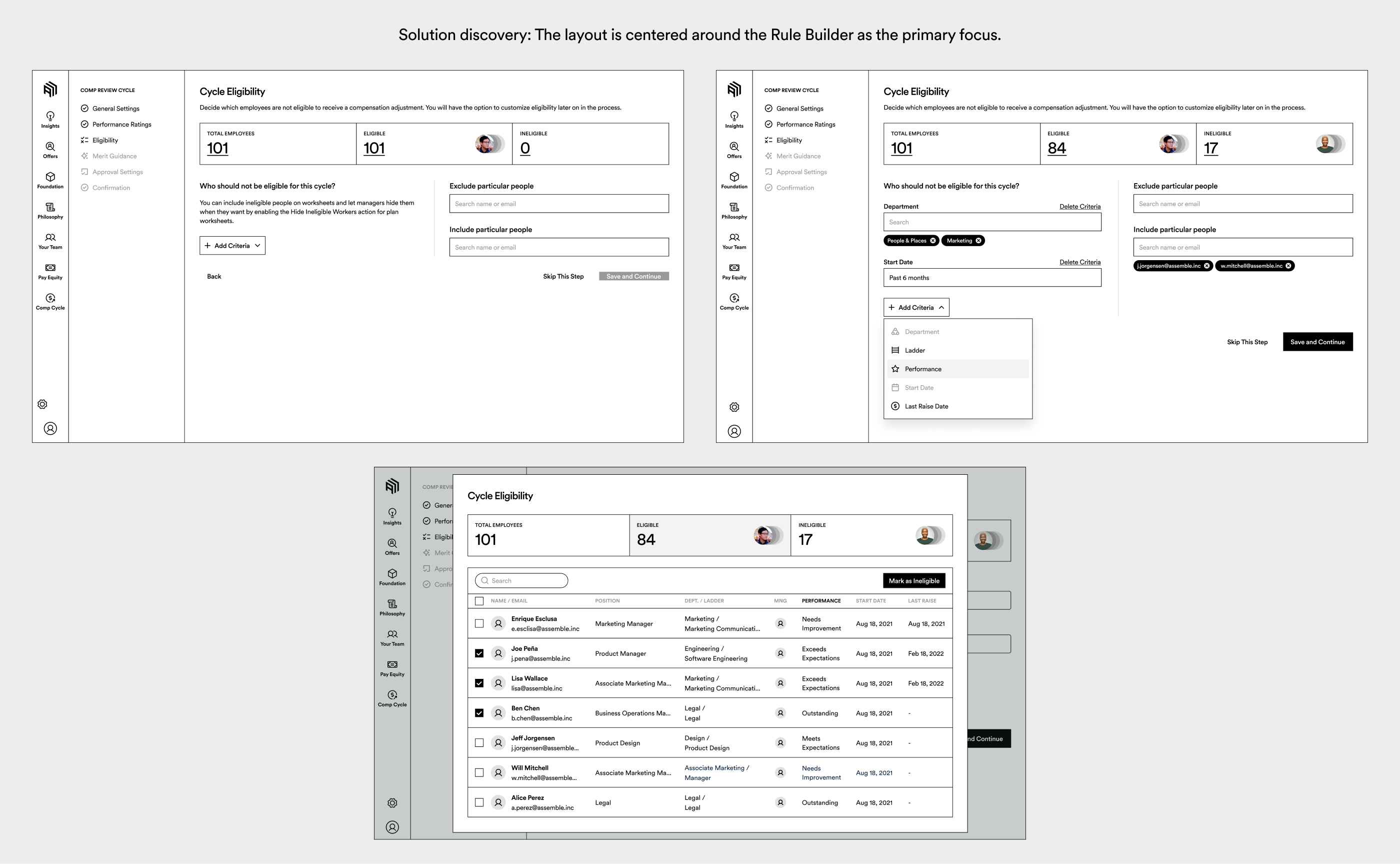
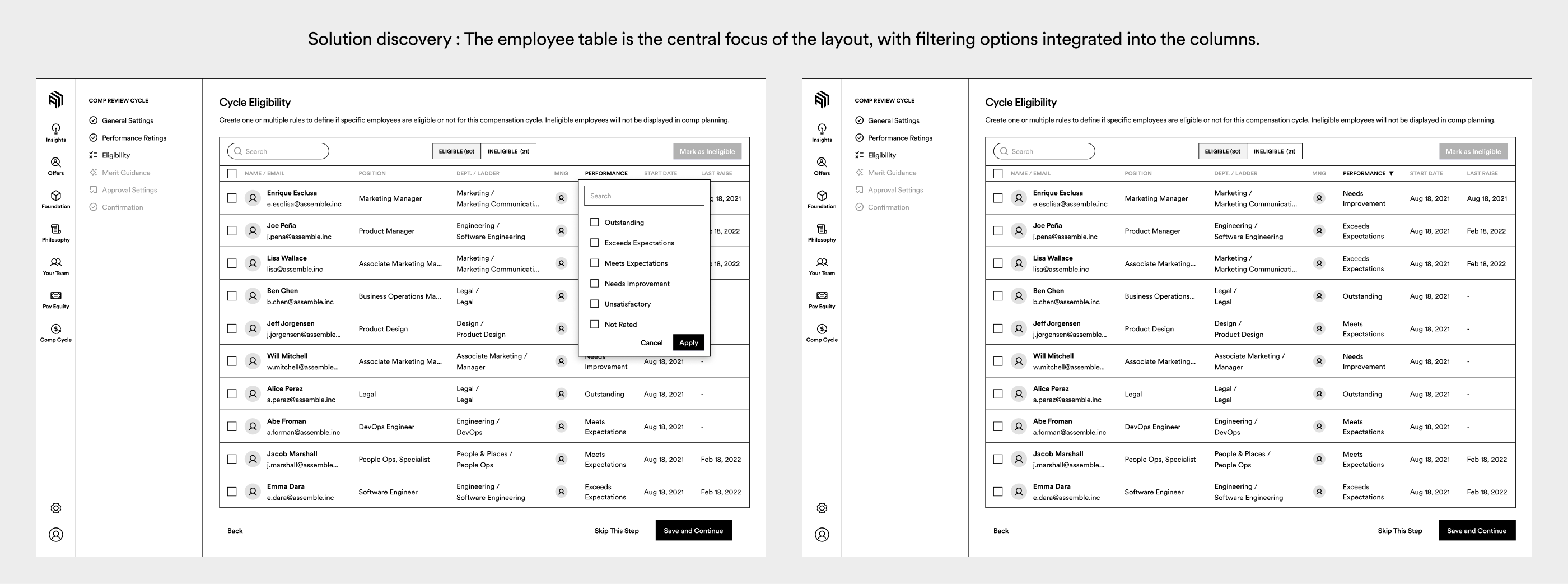

Applying visual design
Once I had received validation from at least 80% of our users, I started working on the visual aesthetics of the different components and elements. Below are the finalized designs for the Rule Builder and Eligibility view.


Final deliverables for full scope of improvements
Additional screens


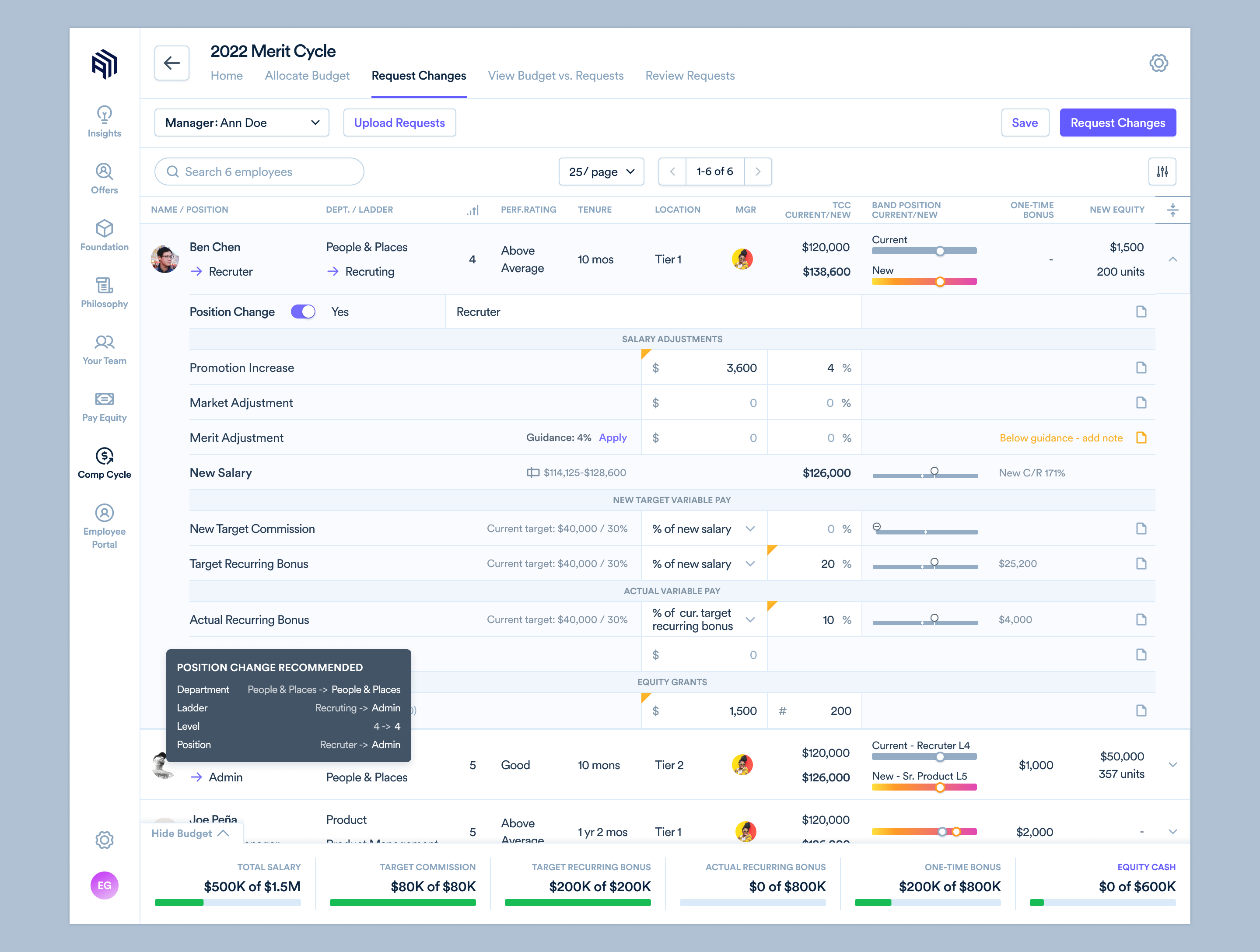
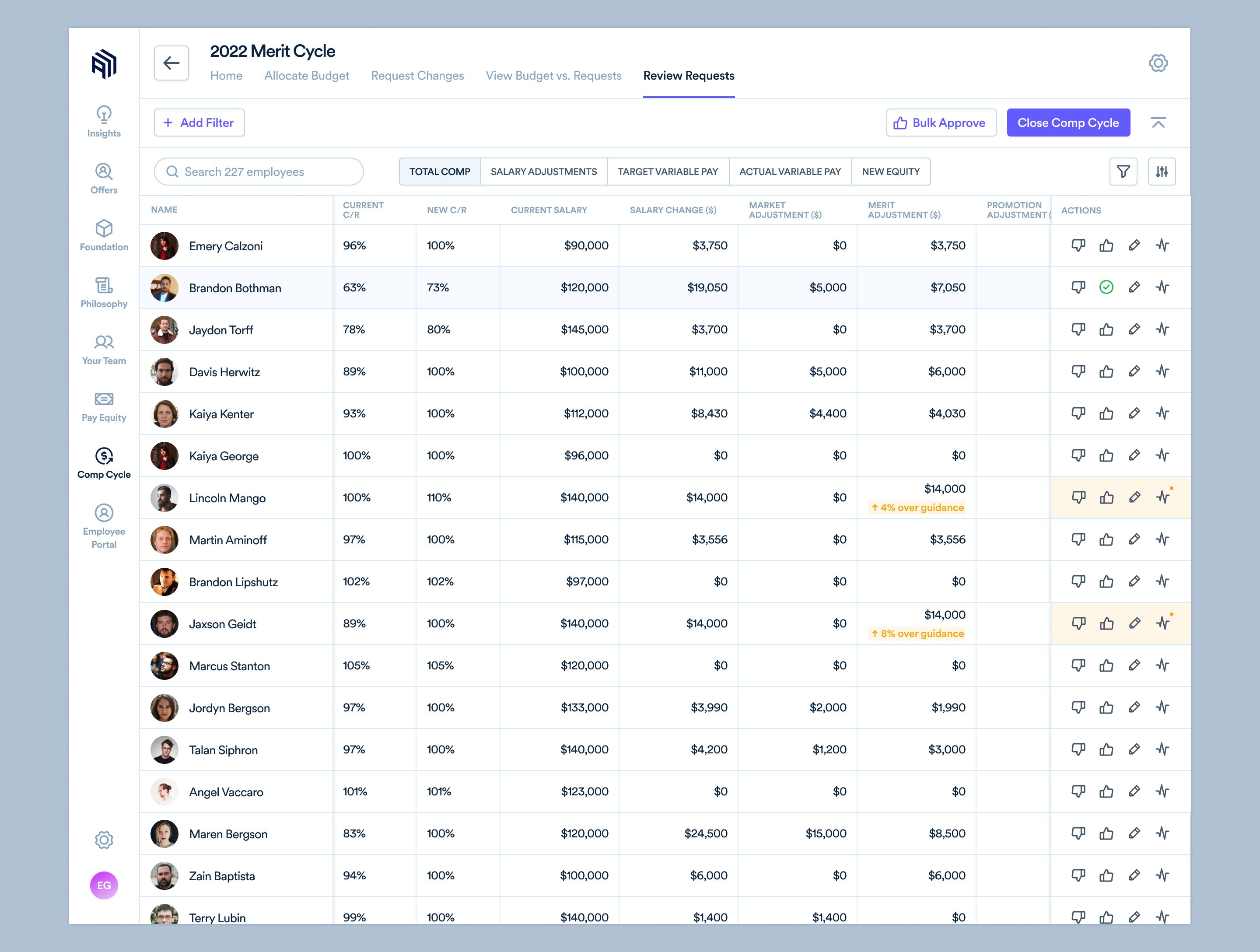
Designed with love in San Francisco
Designed with love in San Francisco
Designed with love in San Francisco
